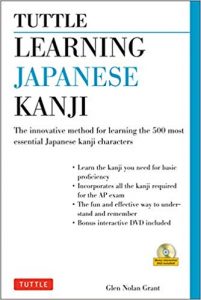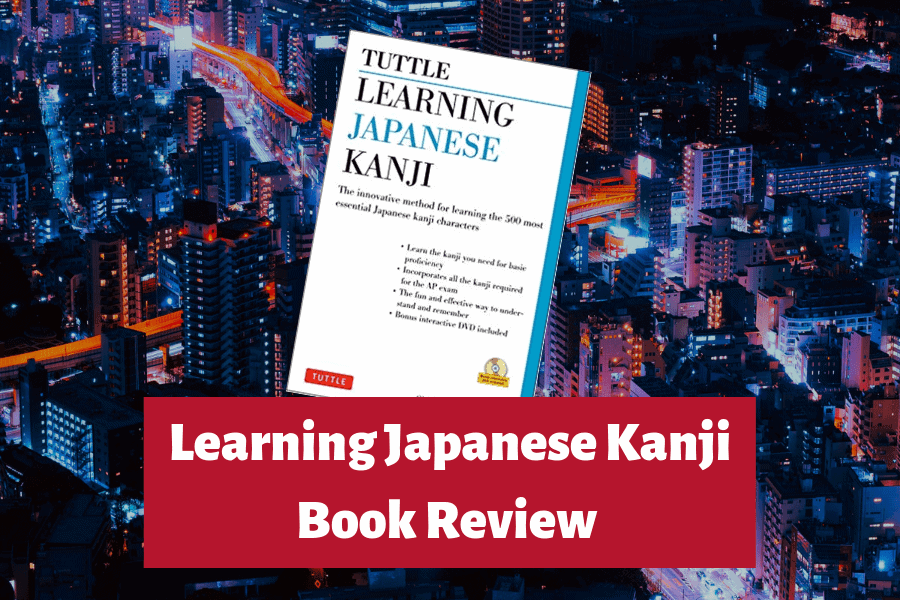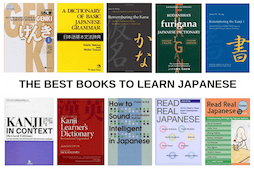Based on the same method as the popular Learning Chinese Characters, Glen Nolan Grant’s Learning Japanese Kanji offers a humorous and memorable approach to mastering the first 500 kanji. Read our Learning Japanese Kanji review below to find out what we liked and didn’t like about the book.
What We Liked About ‘Learning Japanese Kanji’
Mnemonics are cool
Kanji characters are a totally abstract concept to the uninitiated westerner, so you need a helping hand to attach meaning to them. The Japanese mostly learn the kanji through a combination of daily exposure and grueling repetition at school, which mostly involves writing out the characters over and over again. Only by the end of high school is full proficiency achieved. Do you have that much time to burn? Didn’t think so. You need a better solution, which is where this book comes in.
A central part of the method for Learning Japanese Kanji lies in the usage of mnemonics to break down each kanji and make it more memorable. I am of the opinion that stories and mnemonics are the best way to learn the kanji. Why? Because they put sense into the seemingly nonsensical world of kanji characters. Grant uses a variety of funny and memorable mnemonics that should greatly aid you in your learning mission.
Learning by frequency makes a lot of sense
Learning Japanese Kanji focuses on the 520 most commonly occurring kanji characters. Although there are more than 2,000 characters included in the regular use list produced by the Japanese Ministry of Education, the truth is that you will function just fine with a lot less. Learning the 2,000+ list will make you fully literate, but tackling the most common 520 first makes sense to me. From this perspective, I think that the author took the correct approach with this book.
Extra details are appreciated
The inclusion of ON and KUN readings, relevant vocabulary and sample sentences for each character is a nice touch. I personally find example sentences to be one of the keys to learning Japanese.
Audio CD and example sentences
Learning that involves multiple senses has been shown to be more effective (see John Medina’s Brain Rules for reference). Reading and listening together are better than just reading. The audio CD is therefore a nice bonus, allowing you to listen to the character readings and example sentences to drill them into long-term memory.
What We Didn’t Like About ‘Learning Japanese Kanji’
Romaji transliteration is unnecessary
Romaji are a crutch that hold back learners from reading Japanese. If someone is learning the kanji, one might safely assume that this person has already mastered the hiragana/katakana by that stage. If they haven’t yet done so, then the kanji should not be attempted yet. This book would be better without the roman characters, but I suppose nothing is perfect.
Grant or Heisig?
As you may well know, another popular method for learning the kanji is the James Heisig approach. Choosing between Grant or Heisig is a tough call. I think it depends on your goals.
Looking back, our main issue with Heisig’s method was the irrelevance of some of the characters you learn early on. A rare kanji might be introduced on page 6, whereas an incredibly common kanji only comes into play on page 354. This is unavoidable really, as Heisig bases his method on building up a knowledge bank of the radicals which you then later combine to master more complicated characters.
So, if you are the obsessive (and slightly masochistic) type with time on your hands who wants to tackle all 2,000+ kanji in a grueling study campaign then Heisig’s method might be for you. We at Perapera probably fall into this first group.
Grant’s book is a little less ambitious, but, if used correctly, should achieve its aim of getting you a base knowledge of the kanji. If you are practical-minded and see the advantage of learning by frequency order then Learning Japanese Kanji might be a solid choice for you. This book may also be helpful for highly visual learners.
One thing is for certain. You definitely don’t want to use the two kanji methods at the same time. That would be confusing to the extreme, so choose one and stick to it.
Conclusion: Enjoy it!

Full disclosure: We received a free review copy of Learning Japanese Kanji from the guys at Tuttle Publishing.
Want to follow our latest updates? Like us on Facebook.
Rohan has spent years studying Japanese, Chinese and Korean, and currently lives in Japan. He created the perapera pop-up dictionary plugins to help other learners of Chinese and Japanese.




Of course, another method is to use http://www.kanjidamage.com/.
Well, you better have a bit of a twisted mind first, but it sure has its fans.
I’ll let the subtitle do the intro:
“Welcome to KANJIDAMAGE, where you can learn 1,700 kanji using Yo Mama jokes.”
Hi Francois,
Thanks for the link! I’ve never heard of that site before. Looks very interesting! Did you use it yourself? Would love to hear about your results with this method.